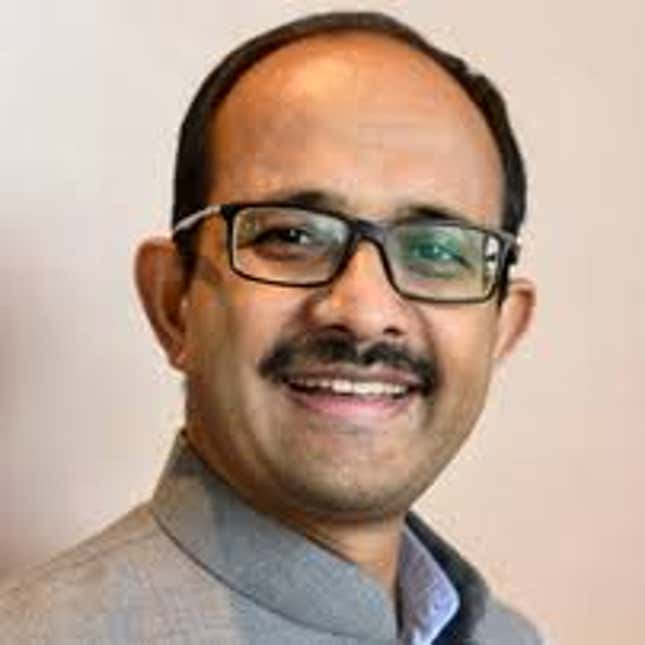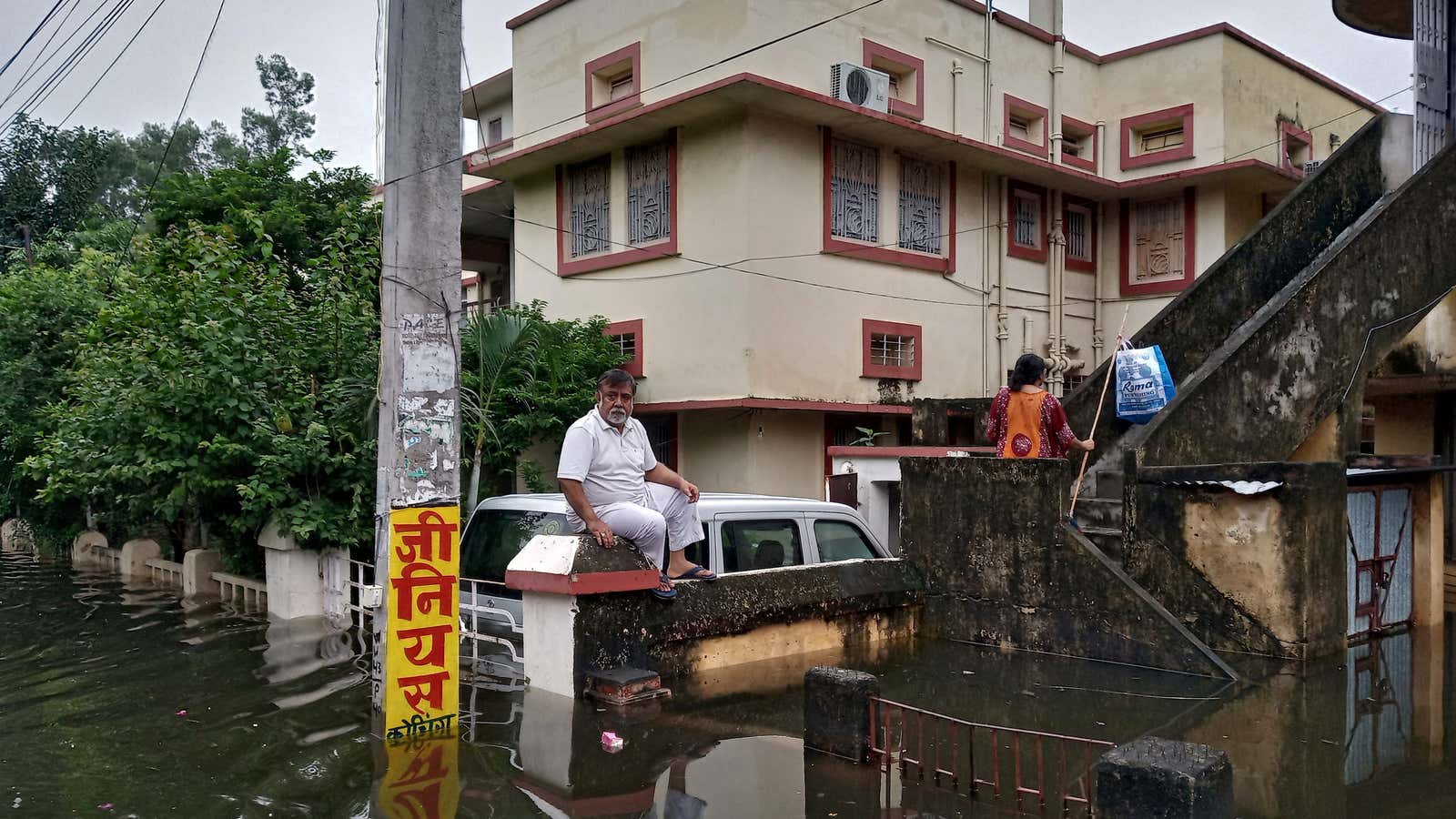India hopes to lead the world in developing natural disaster-proof infrastructure.
On Sept. 23, on the sidelines of the UN climate summit, prime minister Narendra Modi announced that the country is building a coalition for disaster resilient infrastructure, and invited other nations to join the initiative.
India is among the five countries that suffer the highest losses due to natural disasters—over $80 billion in the last 20 years. This year’s monsoon rains killed 1,673 people in floods and rain-induced building collapses. Climate change is increasing the rate of incidence of such extreme weather events.
Modi’s new coalition is a knowledge-management and capacity development platform, and not one for investment, says Kamal Kishore, a member of India’s national disaster management authority (NDMA) who is spearheading the coalition. Quartz spoke with Kishore about the government’s initiative. Edited excerpts:
What will the coalition for disaster resilient infrastructure look like?
There are initiatives globally focusing on infrastructure, or disaster risk reduction or sustainable development. There is none that works at the intersection of these issues. As a result, we are getting pretty good traction.
We’ve had two senior expert-level meetings and engaged about 40 countries, including the entire G20 and a few countries in Africa and Latin America. This coalition is going to be a partnership of not only governments but also institutions such as IITs and foreign universities, multilateral banks, and UN organisations.

What is India’s exposure to natural disasters?
Even in a normal year, there is a lot of rainfall variation in India. Mumbai gets about as much annual rainfall as Singapore. But when we look at the monthly distribution, in July of a normal year, Mumbai gets 800 millimetres (mm) of rainfall. Singapore is a designer’s dream, with stable rainfall across the year, about 200mm every month. When you design an infrastructure system in Singapore, you are designing for a much lower extreme compared to when you’re designing for Mumbai.
How much extreme can you design Mumbai for? The same drain is supposed to carry so much water in July, but in January you are not even using it. We can see this variation across the country as well. There is a large spatial variation too. A district in Bihar can be both flood- and drought-affected at the same time.
Show me some other part of the world which has this kind of variability and does better than us. My case is not that we can’t do better, but the place where we live has this inherent characteristic that (disaster resilience) is challenging. Given that, we do a reasonable job.
With climate change, for instance, the geography of floods may change. We may see floods in parts of the country where we haven’t seen floods. If a community in a particular place hasn’t suffered floods in the last three generations, they are obviously not going to be prepared. But it’s very difficult to predict.
How will the coalition prioritise where to focus its work?
We can’t look at infrastructure systems by state or national boundaries. If you’re building a shipping line, your shipping industry is as resilient as the weakest port. One big objective of the coalition is to look at resilience not just at the level of assets but also from a systems perspective.
Would you seek international finance under the UN?
The coalition is a knowledge-management and capacity development platform. We are not investors.
Some of the work we will do will be climate adaptation by another name. If you are doing good hazard reduction for climate-related disasters, it’s also climate change adaptation. It’s too early to say whether we will leverage climate finance, but the Green Climate Fund has participated in our event in March.
Are there any notable examples of disaster-resilient infrastructure in India?
The shining example is the underground cabling of power systems in a few Odisha towns. Wherever we implemented that, electricity connection was up and running within days (after cyclone Fani earlier this year). Other parts of the state took much longer.
But it also costs much more. We have to make important trade-offs. Would you want to provide a less resilient service to a large number of people or higher resilience to some people while others have to wait?
What are the urgent measures India should implement?
One of the low-hanging fruits is telecom. You may choose to have the tower and the power backup system and no additional investment in making it stronger. But you can have other systems so that when the towers break down, you have a roster of linemen from neighbouring states because you would need large manpower. You can also preposition towers on wheels. So if a tower collapses, you wheel the other one in and reestablish the network.
How do we need to change our future investments in infrastructure?
First, we have to take a systems view in all sectors. We can’t just look at one asset. Second, we have to look at how different sectors such as transport, power, and telecom come together, and what are the dependencies between them. Third, we need to begin to talk about how we are going to deal with the uncertainties of the future. Right now, for example, the storm water drain in any city is designed based on the rainfall levels for the past 100 years. But what will be the rainfall for the next 100 years?
We can design a system for a certain level of hazard, but in a manner that 20 years from now it can be upgraded to withstand a higher level.
